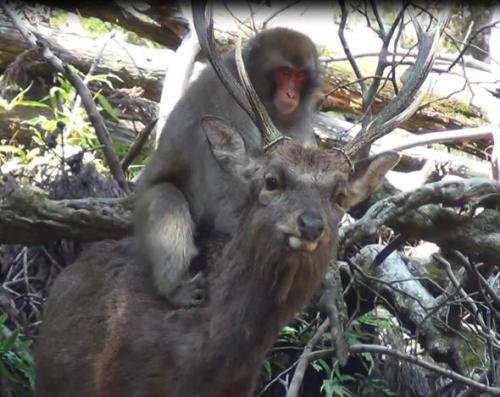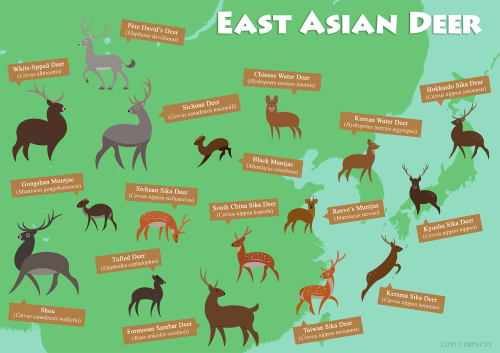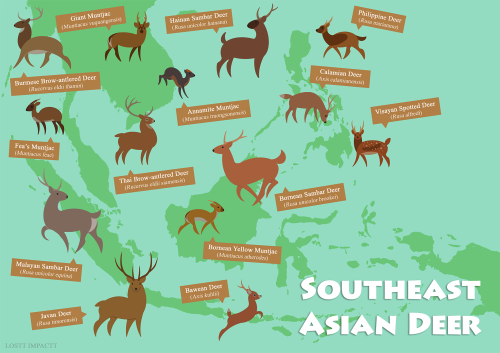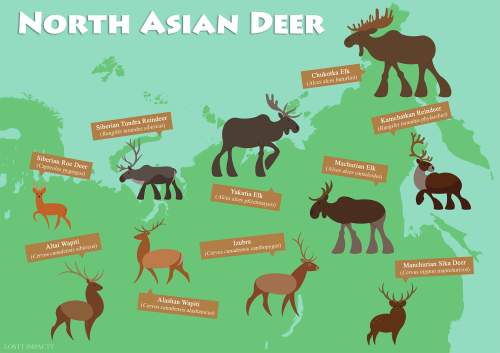#sika deer
Monkeys mounting and humping deer, even pulling on their antlers
Japanese macaques are occassionaly seen mounting and attempting to mate with sika deer. Researchers hypothesize this might be a way to relieve sexual tension for adolescents and low-rankers. Read more in this article.
Female Monkeys Seen Having ‘Sexual Interactions’ With Deer
There’s some unusual monkey business happening on an island in Japan.
On December 11, scientists at the University of Lethbridge in Canada published a paper revealing what appear to be sex acts between young female Japanese macaques and sika deer. The wild monkeys were observed mounting the deer in Minoo, central Japan.
Similar monkey-deer interactions on Yakushima Island were reported in January 2017. Locals in Minoo most likely have been observing these behaviors since at least 2014, says study co-author Noëlle Gunst. But while the previous research is based on anecdotal evidence, the current work focuses on the numbers.
According to the team, which also consists of researchers Paul VaseyandJean-Baptiste Leca, this paper is the first quantitative study of sexual interactions between a non-human primate and a non-primate species.
“These findings support the view that monkey-deer mounting behavior is a sexual practice during which the adolescent female monkeys probably derive sexual gratification,” Gunst writes in an email.
DEER MATES
Wild Japanese macaques have long been known to ride sika deer. The monkeys will sometimes groom their four-legged mounts, while the deer get to eat any fruits the macaques drop and occasionally make meals of the monkeys’ feces. (See a weasel flying on a woodpecker, a seal surfing on a whale, and other animals riding animals.)
The latest study looked at mating season interactions from videos of the behavior and hormone testing from fecal samples. The researchers compared 258 monkey-deer interactions to homosexual contact observed between female macaques in the past.
Based on instances of mounting, thrusting, and vocalizations, the team concludes that these relations were, in fact, sexual. In some cases, the macaques also bit the deer or pulled on their antlers. (If you’re wondering, there is video.)
The researchers observed 14 different monkey-deer pairings. In five cases, female monkeys mounted the same quadruped partner three or more times in a 10-minute period and made the same calls heard when monkeys mate with each other. In other cases, female macaques interrupted sex acts started between other monkeys and deer. Gunst says the interactions occurred about once every day and lasted from a few minutes to about two hours.
For the most part, the deer didn’t seem to care. Some of the deer shook the monkeys off their backs, but others stood passively while the monkeys thrusted. In some cases, the deer just kept on eating.
MONKEY MOTIVATION
Interspecies sex is not unheard of; 10 percent of animal species are known to hybridize. But this practice is more common in animals that are anatomically similar. Since monkeys and deer are so physically different, it’s highly unlikely the macaques confused the deer with a potential primate mate.
“Heterospecific sexual interaction between non-closely related species is very rare to observe,” Cédric Sueur, who published the previous study on monkey-deer relations, told National Geographic in January.
Post link
For funsies I created my very own fursona Their name is Berries and they’re a sika deer I’ve never really done anthro art before (except for a few Beastars fanart) so this is all new to me
Post link
Extinct Cervidae (True Deer)
Western Hemisphere|Eastern Hemisphere|Recently Extinct
*locations on the map aren’t even remotely close to historic ranges
*common names are taken from the IUCN red list if applicable and iNaturalist (and very rarely wikipedia)
*species that are classified as “extinct in the wild” but have active reintroduction programs are not included
*thank you tumblr for destroying the colors
Post link
Cervidae (True Deer)
Western Hemisphere|Eastern Hemisphere|Extinct
*locations on the maps aren’t exact but they’re as close to their native range as i could place them design-wise
*not every single recognized species and subspecies is represented because some i could find zero information on, let alone pictures
*common names are taken from the IUCN red list if applicable and iNaturalist (and very rarely wikipedia)
*species that are extinct in the wild but alive in captivity are not included unless they have started releasing them
*thank you tumblr for destroying the colors
Post link














